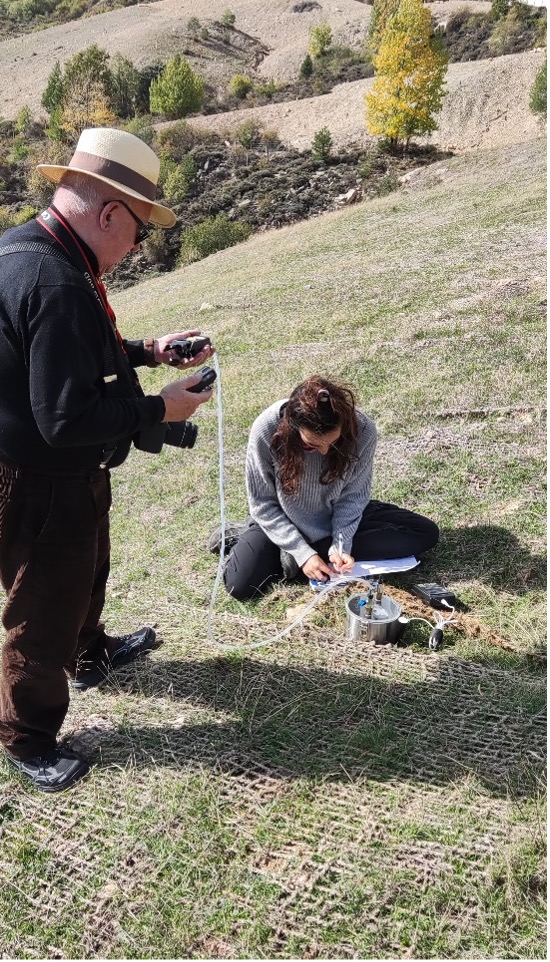On 2 November, the first field campaign was carried out to measure soil respiration in different restored areas of the Santa Engracia mine in Peñalén.
The measurements were carried out in the restored areas where the mulching-seeding method has been applied (in the years 2020 and 2021) as well as in the area where it will be applied this autumn and also in natural terrain.
The measured parameter is actually the CO2 concentration produced during 30 minutes by a soil surface that is delimited by a watertight ring. The CO2 produced is a reflection of the biological activity of the soil (surface vegetation is removed so that it does not interfere with the measurements), the higher the CO2 production, the higher the biological activity.
These measurements, together with the analysis of the soil samples taken, make it possible to study the evolution of the soils and check whether soil conditions similar to the natural ones are being achieved, thus facilitating the growth of vegetation and minimising erosion by surface runoff.
Preliminary results are very positive, having measured higher values in one of the restored areas than in the natural terrain.
This work is being led by soil expert Avelino García, who has developed the procedure and is transferring it to the LIFE RIBERMINE project. Also participating in this field campaign were Cristina Martín Moreno (UCM), Jorge Montero and Alba García, both students of the Interuniversity Master’s Degree in Ecosystem Restoration who are carrying out their respective Master’s Thesis within the framework of the LIFE RIBERMINE project.

Avelino García and Alba García making soil respiration measurements.

Detail of the ring installed in the ground, where the CO2 produced by the biological activity of the soil is concentrated, and of the thermometer to measure the temperature of the soil.

